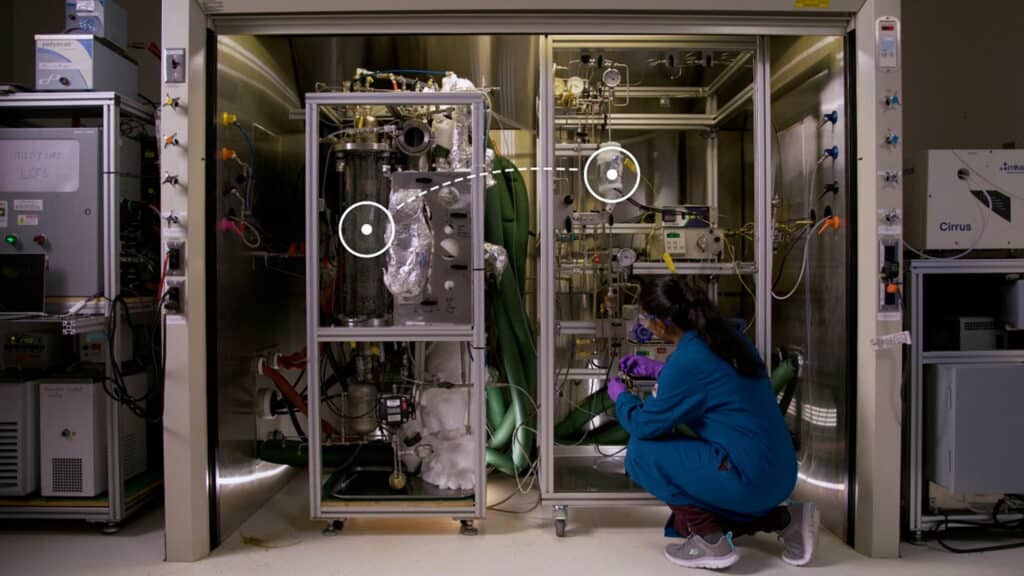Continuous anthropogenic emissions of CO2 into the atmosphere since the industrial revolution have been associated with ongoing environmental issues such as global warming and climate change. While we transition from fossil energy to renewable energy sources to reduce CO2 emissions, massive deployment of carbon capture, utilization, and storage technologies is needed to limit the global temperature rise. The high cost of commercial capture technology is a longstanding barrier to its widespread use.
To meet that need, researchers at the Department of Energy’s Pacific Northwest National Laboratory have created a new system that efficiently captures CO2 – the least costly to date – and converts it into methanol, one of the world’s most widely used chemicals.
PNNL researchers believe methanol can provide that incentive. The chemical holds many uses as a fuel, solvent, and an important ingredient in plastics, paint, construction materials, and car parts.
PNNL chemist David Heldebrant, who leads the research team behind the new technology, compared the system to recycling.
“That’s essentially what we’re trying to do here,” said Heldebrant. “Instead of extracting oil from the ground to make these chemicals, we’re trying to do it from CO2 captured from the atmosphere or from coal plants, so it can be reconstituted into useful things. You’re keeping carbon alive, so to speak, so it’s not just ‘pull it out of the ground, use it once, and throw it away.’ We’re trying to recycle the CO2, much like we try to recycle other things like glass, aluminum, and plastics.”

The new system is designed to fit into coal-, gas-, or biomass-fired power plants, as well as cement kilns and steel plants. Using a PNNL-developed capture solvent, the system snatches CO2 molecules before they’re emitted, then converts them into useful methanol and other substances.
Heldebrant and his team concede that a significant amount of work requires to optimize and scale this process, and it may be several years before it is ready for commercial deployment. But “the team’s integrated approach opens up a world of new CO2 conversion chemistry. There’s a sense that we’re standing on the threshold of an entirely new field of scalable, cost-effective carbon tech. It’s a very exciting time,” said Casie Davidson, manager for PNNL’s Carbon Management and Fossil Energy market sector.
Researchers around the world are putting efforts into this carbon capture technology field. All these methods may be effective, but they arguably don’t provide as strong a financial incentive as the new PNNL carbon capture technology. The PNNL team’s goal is to continually chip away at costs by making the capture process more efficient and economically competitive.
Journal reference:
- Jotheeswari Kothandaraman, Johnny Saavedra Lopez, Yuan Jiang, Eric D. Walter, Sarah D. Burton, Robert A. Dagle, David J. Heldebrant. Integrated Capture and Conversion of CO2 to Methanol in a Post-Combustion Capture Solvent: Heterogeneous Catalysts for Selective C-N Bond Cleavage. Advanced Energy Materials, 2022; DOI: 10.1002/aenm.202202369
PNNL scientists develop least costly carbon capture system to date
Source: Tambay News

0 Comments